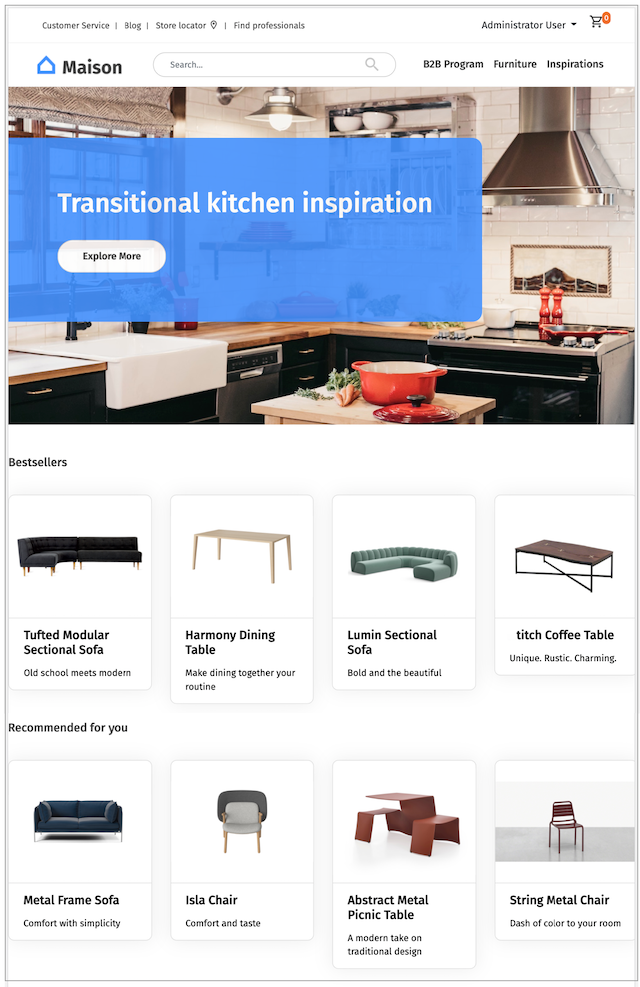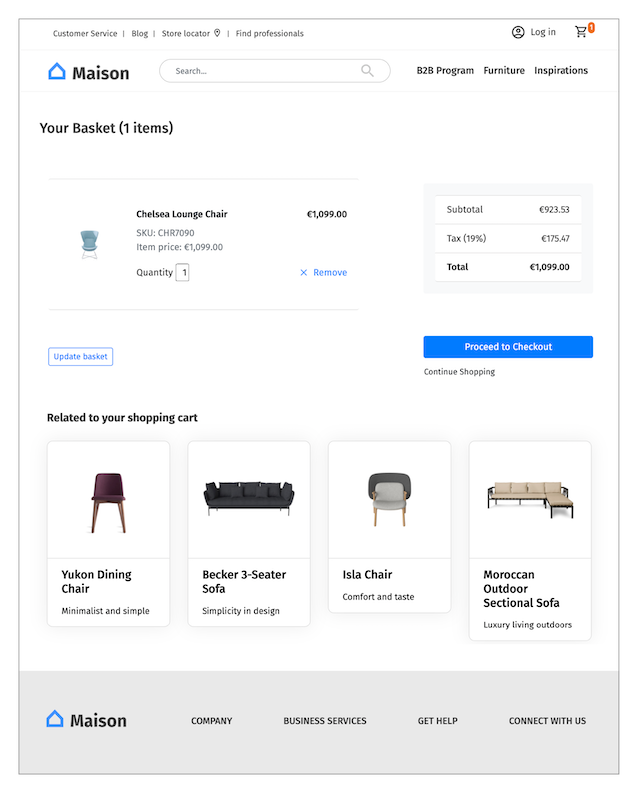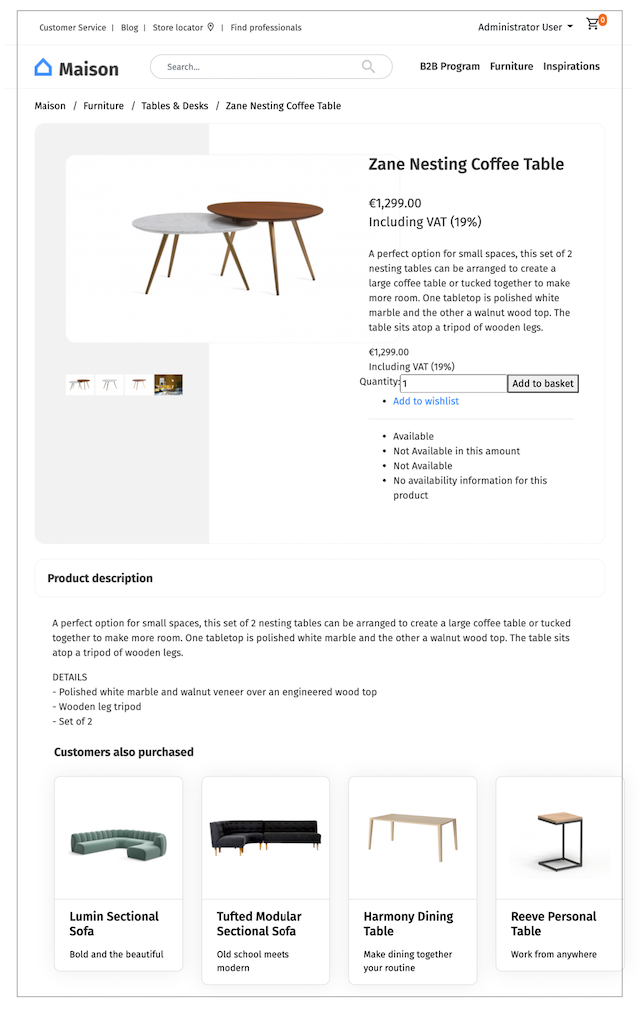Use cases¶
There are different areas where recommendations can prove valuable from a business point of view. The most common ones are eCommerce and content publishing.
eCommerce¶
In eCommerce, recommendations can help website visitors find the exact product that fulfils their expectations. When a user is not sure about what to purchase, recommendations can suggest similar, alternative, or complementary products. Some typical use cases are:
- The bestseller list shown on a home page
- The "What other customers bought" and "Frequently bought together" lists on a product detail page
- The "Related to your shopping cart" list on the shopping cart page
- The "Bestsellers in the current category" list shown on the category's landing page
- A recommendation bar with recommendations based on the current user's profile
- An email with recommendations based on the contents of an abandoned shopping cart

Each recommendation box in the graphics above and below represents a scenario. Scenarios are configurations that define what kind of recommendations should be delivered.

Content publishing¶
In publishing, recommendations bring indirect value by keeping users on the website. Unlike in eCommerce, publishers often provide content for free and are financed from advertisements. Increasing the click-through (or conversion) rate to increase profits from advertisements is one of the drivers here.
Use cases in publishing can be the following:
- A list of the most popular content shown on the home page
- The "Bestsellers in the current category" list shown on the category's landing page
- Related content shown on the content detail page

Multiple website hosting¶
If your Ibexa DXP instance hosts multiple websites, you can configure the Personalization service to provide independent recommendations for each of these websites.
This can eliminate irrelevant recommendations when there are:
- Multiple websites that belong to different customers
- Both eCommerce and content publishing websites
- Multiple localized versions of the same digital presence
- Several eCommerce websites operating under different brands
To get independent results for different websites, you must set up and configure the service separately for each of these websites.